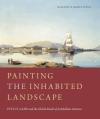Material and Visual Culture Studies
| Looking Close and Seeing Far: Samuel Seymour, Titian Ramsay Peale, and the Art of the Long Expedition, 1818-1823 | ||
| The Early American Daguerreotype: Cross-Currents in Art and Technology | ||
| Training the Eye and the Hand: Fitz Hugh Lane and Nineteenth Century American Drawing Books | ||
| The Origins of Photojournalism in America | ||
| Portrait of a Woman in Silk: Hidden Histories of the British Atlantic World | ||

|
Texas Lithographs: A Century of History in Images | Join us as scholar Ron Tyler discusses his latest publication Texas Lithographs: A Century of History in Images. Westward expansion in the United States was deeply intertwined with the technological revolutions of the nineteenth century, from railroads to telegraphy. Among the most important of these, if often forgotten, was the lithograph. Before photography became a dominant medium, lithography—and later, chromolithography—enabled inexpensive reproduction of color illustrations, transforming journalism and marketing and nurturing, for the first time, a global visual culture. |

|
Painting the Inhabited Landscape: Fitz H. Lane and the Global Reach of Antebellum America | Join us as historian Margaretta Lovell discusses her new publication, Painting the Inhabited Landscape: Fitz Henry Lane and the Global Reach of Antebellum America. During the program, Lovell will explore the paintings of Gloucester native Fitz H. Lane and the community and the patrons that supported his career with an eye to understanding how New Englanders thought about their land, their economy, their history, and their links with widely disparate global communities. |

|
Prints of a New Kind: Political Caricature in the United States, 1789–1828 | In Prints of a New Kind, Dr. Allison M. Stagg details the political strategies and scandals that inspired the first generation of American caricaturists in the country’s transformative early years between 1789 and 1828. She examines the caricatures that mocked politicians and events reported in newspapers, the reactions captured in personal papers of the politicians being satirized, and the lives of the artists who satirized them. |